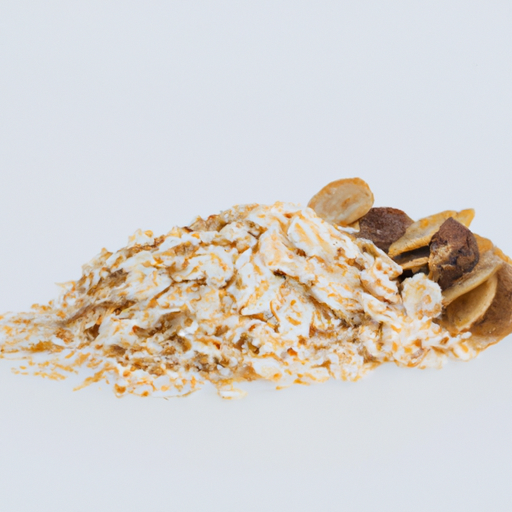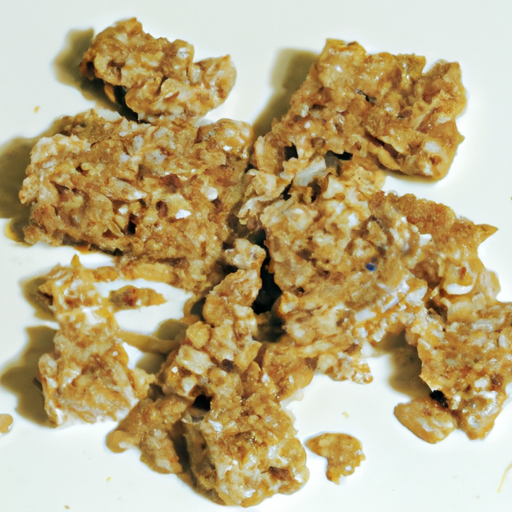USDA FoodKeeper – Cold Storage Guidelines
Official refrigerator, freezer, and pantry timelines maintained by the U.S. Department of Agriculture.
Visit USDA FoodKeeperPacked with versatility, these other cereal products can be a delightful addition to your meals or snacks. With a pantry shelf life of up to 180 days, they’re a convenient staple, but be mindful to enjoy them within 30 days after the expiration date for optimal safety and flavor.
May be safe if properly stored and fresh
Other Cereal Product may remain safe to consume after its expiration date if it has been stored correctly and shows no signs of spoilage. Risk increases over time, and safety depends on storage conditions, freshness at purchase, and handling. Always inspect carefully before consuming and discard if you notice any changes in appearance, smell, or texture. When in doubt, discard it.
Other Cereal Product may remain safe to consume after its expiration date if it has been stored correctly at the proper temperature and shows no signs of spoilage. However, risk increases over time, especially if storage conditions were not optimal.
Storage timeline guidance: Some food safety sources suggest that other cereal product, when stored properly at the correct temperature and showing no spoilage signs, may remain usable for approximately 30 days after its expiration date.
Important: This is not a guarantee of safety. Food safety depends on many factors including storage temperature, handling, initial freshness, and contamination risk. Always inspect food carefully for spoilage signs (odor, texture, color changes) before consuming. When in doubt, discard it to avoid foodborne illness.


Pantry
Room temperature
Keep in a sealed container
Dry foods last longer when protected from moisture. Using airtight pantry containers (Amazon) helps maintain quality.
180 days
Mold, off smell
Adding food-safe desiccant packs (Amazon) can help control humidity in dry food storage.
Use as a crunchy topping for yogurt or salads
Sure thing! So, expiration dates and best quality dates are quite different when it comes to Other Cereal Product. Expiration dates are more about safety. It means you should not consume the product beyond that date as it may no longer be safe to eat due to potential bacteria growth or spoilage. For Other Cereal Product, this could mean the product losing its crunchiness or flavor, or even developing a strange smell. On the other hand, best quality dates indicate when the product is at its peak in terms of taste and freshness. Eating it after this date won't harm you, but the quality might not be as good. For example, Other Cereal Product might start to taste a bit stale or lose its texture. Personally, I tend to follow both dates just to be safe. If a box of cereal is past its expiration date, I usually don't take chances, but if it's past the best quality date by a few days, I might still go for it if it looks and smells okay. It's all about using your best judgment!
To determine if Other Cereal Product has spoiled, check for any signs of mold, unusual discoloration, or off smells. Look for any changes in texture, such as clumping or moisture. If the product appears discolored, smells rancid, or feels soggy, it is best to discard it to avoid potential foodborne illness.
Hey there! When it comes to enjoying Other Cereal Products, it's important to be aware of the risks of foodborne illnesses. One common risk is contamination from bacteria like Salmonella or E. coli, which can cause symptoms like stomach cramps, nausea, and diarrhea. To keep your Other Cereal Products safe to eat, make sure to store them in a cool, dry place away from moisture and heat. Check the packaging for any signs of damage or tampering before consuming. It's also a good idea to wash your hands before handling any food to prevent the spread of bacteria. If you start to feel unwell after eating Other Cereal Products, pay attention to symptoms like vomiting, fever, or dehydration. It's always better to be safe than sorry, so don't hesitate to seek medical help if needed. Remember, enjoying your Other Cereal Products should be a delicious and safe experience, so taking simple precautions can go a long way in keeping you healthy and happy!
Hey there! Storing Other Cereal Products can be a breeze with a few handy tricks up your sleeve. One of my favorite storage hacks is using airtight containers to keep them fresh for longer. It helps in preventing them from going stale quickly. Plus, it makes it easy to see how much cereal you have left! Another pro tip is using a cereal dispenser if you have space on your countertop. It not only keeps your Other Cereal Products neatly organized but also adds a fun touch to your kitchen decor. I love how convenient it is to pour out just the right amount without making a mess. If you're tight on space, consider using vertical storage solutions like hanging baskets or wall-mounted shelves to keep your Other Cereal Products accessible yet out of the way. It's a great space-saving option, especially in smaller kitchens. I've found that transferring cereals into clear, labeled containers not only looks pleasing but also helps in keeping track of expiration dates. Plus, it makes breakfast time a lot more efficient when everything is neatly organized and easy to find. Remember to store them in a cool, dry place away from direct sunlight for the best results. Happy organizing!
Hey there! Did you know that cereal bars, a type of cereal product, were actually invented by a Swiss doctor in the late 19th century? Dr. Maximilian Bircher-Brenner created the first muesli bar as a healthy snack for his patients! How cool is that? Cereal bars have become a popular on-the-go breakfast or snack option worldwide due to their convenience and variety of flavors. In some cultures, they are even considered a staple for busy mornings or as a quick energy boost during the day. One fun fact is that cereal bars have evolved over the years to include ingredients like nuts, dried fruits, and even chocolate for a delicious twist. They're not only tasty but also a great source of quick energy and nutrients. Next time you grab a cereal bar, think about its humble beginnings and how it has become a beloved snack enjoyed by people of all ages and backgrounds around the globe!
If Other Cereal Product has been stored at room temperature for a few days, it should still be safe to consume within its shelf life of 180 days. However, check for any signs of spoilage such as off odors, unusual texture, or mold growth before consuming.
Once Other Cereal Product is opened, it is recommended to consume it within 30 days after the expiration date for the best quality and safety. Properly sealing the package after each use can help maintain its freshness and prevent it from going stale.
The type of container can impact the shelf life of Other Cereal Product. Airtight containers or resealable bags can help extend its freshness by preventing moisture and air exposure. Transferring the cereal to a proper storage container can help maintain its quality for a longer period.
It is generally safe to store Other Cereal Product next to spices in the pantry as long as the spices are properly sealed. However, to prevent cross-contamination of flavors, it's advisable to keep the cereal in a separate area or use separate storage containers to maintain its original taste and aroma.
Other Cereal Product is not recommended for freezing as it can affect the texture and quality of the cereal. Freezing can lead to moisture absorption, causing the cereal to become soggy or lose its crunchiness when thawed. It's best to store it in a cool, dry place in its original packaging.
Shelf life can vary between different brands of Other Cereal Product due to factors such as ingredients, packaging, and processing methods. It's important to check the expiration date on the package and follow the manufacturer's recommendations for storage and consumption to ensure product quality and safety.
Cooking Other Cereal Product can affect its expiration by altering its texture and flavor. Once cooked, the cereal should be consumed promptly and any leftovers refrigerated within 2 hours to prevent bacterial growth. Follow proper cooking instructions to ensure food safety and quality.
Other Cereal Product generally lasts longer in cooler temperatures, such as winter, compared to warmer temperatures like summer. High temperatures and humidity in summer can accelerate the deterioration of cereals, leading to quicker spoilage. Storing the cereal in a cool, dry place can help extend its shelf life.
When transporting Other Cereal Product for a road trip, it's important to pack it in a sealed container or resealable bag to prevent spillage and maintain freshness. Avoid exposing the cereal to direct sunlight or extreme heat in the car. If possible, pack a small cooler with ice packs to keep the cereal fresh during the journey.
Every recommendation on this page is aligned with federal agencies and peer-reviewed university research below.
Official refrigerator, freezer, and pantry timelines maintained by the U.S. Department of Agriculture.
Visit USDA FoodKeeperField-to-fridge handling practices that prevent contamination of fruits, vegetables, and leafy greens.
Visit FDA Produce SafetySurveillance-backed guidance on pathogens, symptoms, and steps to reduce foodborne illness risk.
Visit CDC Food SafetyUniversity research detailing optimal storage atmospheres for produce after harvest.
Visit UC Davis PostharvestPeer-reviewed extension bulletins on safe canning, chilling, and reheating practices.
Visit Penn State ExtensionNeed deeper reading? Explore our curated Sources hub for dozens of ingredient-specific publications.
Reviewed by the Can I Eat Expired Editorial Team, using food safety guidance from the USDA, FDA, CDC, and university extension programs.
Scan your food directly and get instant safety info using our AI-powered camera feature.
Cooking Ingredients
View expiration date and storage guide →
Baking Supplies
View expiration date and storage guide →
Instant Foods
View expiration date and storage guide →
Condiments & Spices
View expiration date and storage guide →
Fruits & Vegetables
View expiration date and storage guide →
Condiments & Spices
View expiration date and storage guide →
Sauces and Marinades
View expiration date and storage guide →
Beverages
View expiration date and storage guide →
Condiments & Spices
View expiration date and storage guide →
Important: These are general guidelines based on authoritative sources listed above. Always use your best judgment and when in doubt, throw it out. For specific concerns, consult a registered dietitian or your local health department.
Disclosure: As an Amazon Associate, we earn from qualifying purchases. This helps support our site and allows us to continue providing free food safety information.